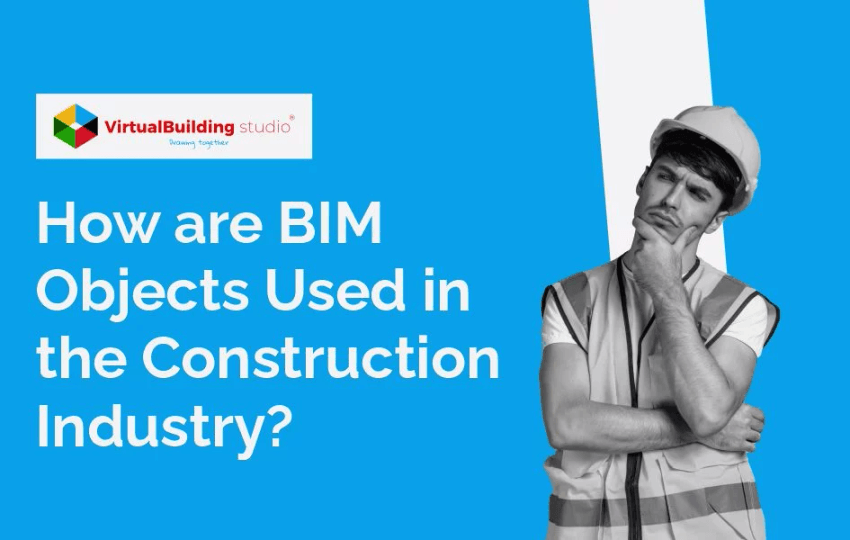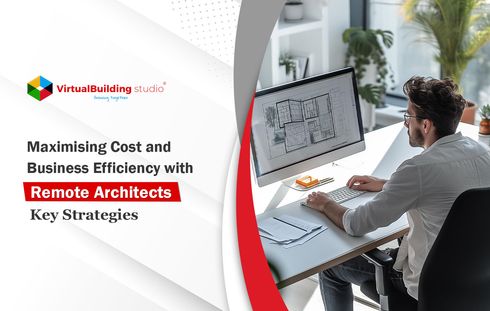
It does not come as a surprise that BIM is all set to take over the architecture, engineering, and construction (AEC) industry shortly. It has revolutionized the construction industry in ways never thought of before.
BIM technology helps architects, contractors, and engineers visualize their designs in a simulated environment. It enables a seamless flow of information among stakeholders, and all of the information is made instantly accessible to all the people involved, which makes it easier for them to provide inputs and work out conflicts if any.
It becomes critical to feed in the correct information, as gathered from each stakeholder, to create a useful BIM model that mimics the on-site conditions. This point is where BIM objects come into the picture.
BIM objects are fundamental to a BIM model. They provide detailed information that represents the product and geometrical information that defines the product’s physical characteristics.
Based on their geometrical shape, we classify BIM objects into “component” and “layered.” Component objects are products that have well-defined geometrical shapes and sizes, whereas layered objects do not have well-defined shapes and sizes. For instance, carpets and ceilings are layered objects, while doors and windows are component objects.
We can also classify BIM objects into “generic” and “specific.” Generic objects are products used during the initial design phase, and we later substitute them with specific objects. We use specific objects only during the later stages of construction. These objects are also called manufacturer objects.
Each object is represented in the most geometrically-effective way possible so that we can simulate actual product performance. Let us look at some of the benefits of using BIM objects in the AEC industry:
Streamlined construction coordination:
Our 3D renderings coordinate construction sequencing, and these lifelike visualizations make communication effortless as they bring important data within easy reach of stakeholders and clients alike.
Cost estimation, conflict, interference, and collision detection is made easier by feeding information about data-rich BIM objects. All the data is extracted and updated in real-time, which avoids conflicts, and makes the whole process of information exchange more efficient.
Clash detection and cost optimization:
Clashes are detected in the initial stage of construction and resolved accordingly. This process ensures that our project is on a strict timeline and that we do not incur any additional costs.
Facilities management:
Initial costs only account for about 10% of the overall cost. We attribute a better part of the total costs to facilities management. BIM ensures that we estimate these quantities and update them in real-time so that we can assign a budget and a timeline to our project.
BIM objects make it easier for us to visualize, coordinate, detect, and resolve, which ensures an overall faster and more effective process with better product quality. Objects help us throughout the project lifecycle, from planning and construction to facilities management.
The use of BIM has significantly increased in the past few years. Indeed, we are still in a formative stage, and people continue to rely on traditional drawings to get their work up and running but, BIM technology continues to evolve as it responds to market and user-specific needs. The journey isn’t going to be easy, but the good news is we are only going up from here.
We, at the Virtual Building Studio, provide BIM services to all of our clients through detailed engineering and quality control using our ample expertise ranging from design to on-site installation. Our experts help clients in identifying and eliminating high-cost areas by re-designing MEPF services and resolving constructability issues.
Our team has been consistently working towards ensuring on-time project delivery and quality outputs. We have successfully handled a wide range of BIM projects with varying complexities for our clients in the USA, the UK, Singapore, Australia, and the UAE.
We are committed to providing our clients with the best of the opportunities that ensure their growth and success. We have been working towards establishing a firm foothold in the BIM industry, and our team of experts is leading the way.




